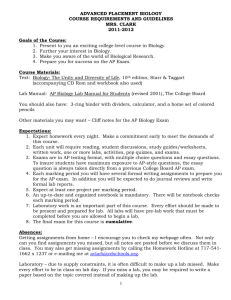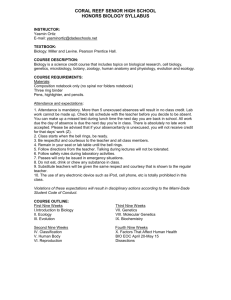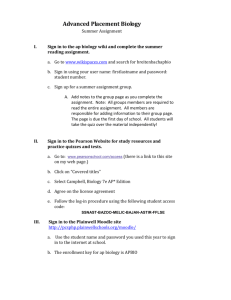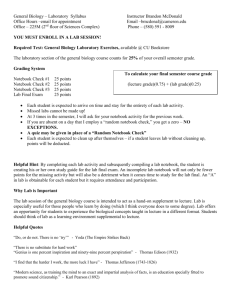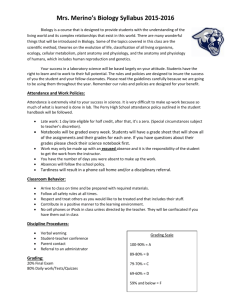Biology Notebook Organization Guidelines:
advertisement
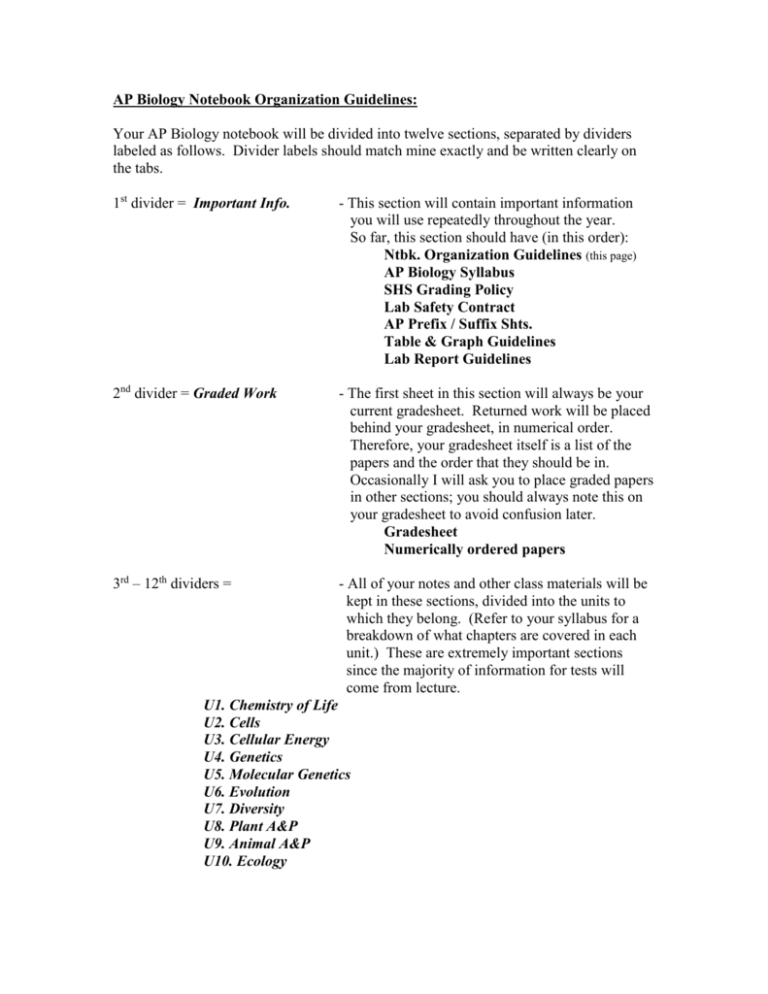
AP Biology Notebook Organization Guidelines: Your AP Biology notebook will be divided into twelve sections, separated by dividers labeled as follows. Divider labels should match mine exactly and be written clearly on the tabs. 1st divider = Important Info. - This section will contain important information you will use repeatedly throughout the year. So far, this section should have (in this order): Ntbk. Organization Guidelines (this page) AP Biology Syllabus SHS Grading Policy Lab Safety Contract AP Prefix / Suffix Shts. Table & Graph Guidelines Lab Report Guidelines 2nd divider = Graded Work - The first sheet in this section will always be your current gradesheet. Returned work will be placed behind your gradesheet, in numerical order. Therefore, your gradesheet itself is a list of the papers and the order that they should be in. Occasionally I will ask you to place graded papers in other sections; you should always note this on your gradesheet to avoid confusion later. Gradesheet Numerically ordered papers 3rd – 12th dividers = - All of your notes and other class materials will be kept in these sections, divided into the units to which they belong. (Refer to your syllabus for a breakdown of what chapters are covered in each unit.) These are extremely important sections since the majority of information for tests will come from lecture. U1. Chemistry of Life U2. Cells U3. Cellular Energy U4. Genetics U5. Molecular Genetics U6. Evolution U7. Diversity U8. Plant A&P U9. Animal A&P U10. Ecology AP Bio. Lab Notebook: Your AP Lab notebook will also be divided into twelve sections. Each AP Lab will have its own section containing (in this order): the Xeroxed pages of the lab, the write-up/lab report you write to accompany the lab, and any notes you may have regarding the lab. These labs will be organized in number order, regardless of the order in which they are performed. Sections should be separated by dividers and labeled as follows. #1. Diffusion & Osmosis #2. Enzyme Catalysis #3. Mitosis & Meiosis #4. Plant Pigments & Photosynthesis #5. Cell Respiration #6. Molecular Biology #7. Genetics of Drosophila #8. Population Genetics & Evolution #9. Transpiration #10. Physiology of Circulatory System #11. Animal Behavior #12. Dissolved O2 & 1° Productivity



